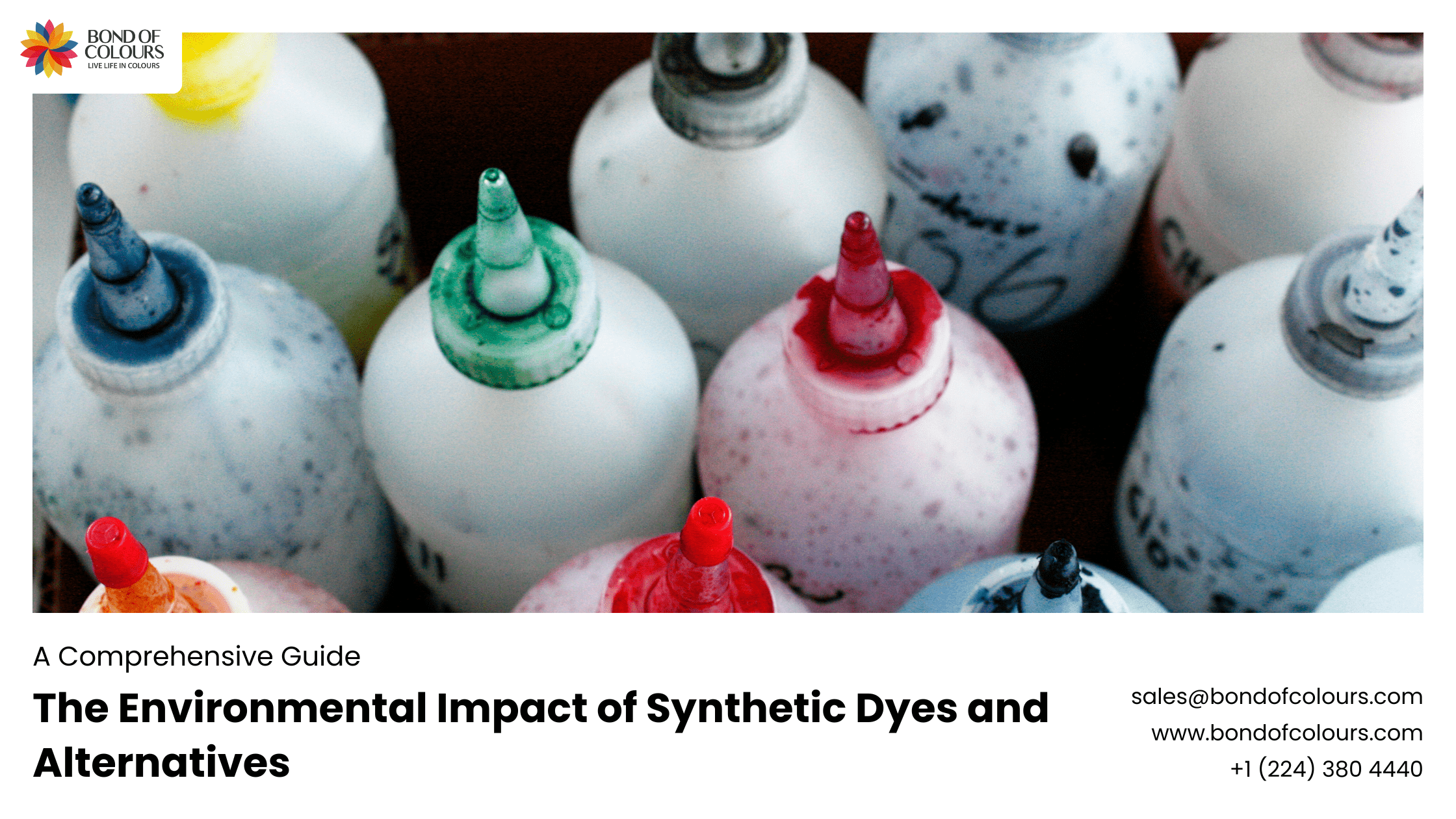Address
304 North Cardinal
St. Dorchester Center, MA 02124
Work Hours
Monday to Friday: 7AM - 7PM
Weekend: 10AM - 5PM
Address
304 North Cardinal
St. Dorchester Center, MA 02124
Work Hours
Monday to Friday: 7AM - 7PM
Weekend: 10AM - 5PM
Explore the environmental impact of synthetic dyes and sustainable alternatives. Learn about health risks, regulatory measures, and the growing demand for eco-friendly dyeing solutions.

Synthetic dyes are ubiquitous in modern industries, providing vibrant colors to textiles, cosmetics, and food products. However, their widespread use comes with significant environmental and health implications.
Synthetic dyes contribute to the pollution of rivers, lakes, and oceans through wastewater discharge from manufacturing processes. The release of untreated or poorly treated dye effluents can severely disrupt aquatic ecosystems.
Aquatic organisms are particularly vulnerable to the toxicity of synthetic dyes, which can affect their growth, reproduction, and overall health. Some dyes contain heavy metals and carcinogenic compounds that bioaccumulate in marine species.
The disposal of dye-laden sludge and wastewater onto land can lead to soil contamination, affecting agricultural productivity and posing risks to human health through food chain contamination.
Synthetic dyes have been linked to various health issues, including skin allergies, respiratory problems, and even cancer. Workers in dye manufacturing industries are at heightened risk due to prolonged exposure to toxic chemicals.
Governments worldwide have implemented regulations to control the use and disposal of synthetic dyes. Compliance with environmental standards is mandatory for industries to minimize their ecological footprint.
Consumers and industries are increasingly recognizing the need for sustainable practices. This shift is driving the demand for natural dyes derived from renewable sources such as plants, minerals, and insects.
Natural dyes are biodegradable and pose minimal risk to ecosystems compared to synthetic counterparts. They break down naturally without leaving harmful residues.
Unlike synthetic dyes, natural alternatives are non-toxic and hypoallergenic, making them safer for consumers and workers involved in the dyeing process.
Natural dyes often impart unique shades and textures that synthetic dyes cannot replicate, appealing to consumers seeking authentic and eco-friendly products.
The production of natural dyes can be more expensive due to higher raw material costs and specialized extraction processes. This cost difference often deters industries from making a complete transition.
Limited availability of raw materials and challenges in scaling production to meet industrial demands pose significant barriers to widespread adoption of natural dyes.
Recent advancements in extraction techniques and dyeing technologies have enhanced the color stability and quality of natural dyes. Innovations in enzymatic and microbial dye synthesis show promise for future applications.
Several forward-thinking companies have successfully integrated natural dyes into their product lines, showcasing sustainable practices that resonate with eco-conscious consumers and enhance brand reputation.
Educating consumers and industries about the benefits of natural dyes is crucial for fostering widespread adoption. Awareness programs promote sustainable choices and encourage responsible consumption practices.
The natural dyes market is poised for significant growth as regulatory pressures and consumer preferences align towards sustainable solutions. Opportunities abound for investment in research and development of eco-friendly dyeing technologies.
In conclusion, while synthetic dyes continue to dominate global markets, their environmental and health impacts underscore the urgent need for sustainable alternatives. Embracing natural dyes not only mitigates ecological harm but also meets growing consumer demand for ethically produced goods. By supporting innovation and responsible practices, industries can lead the way towards a greener and healthier future.